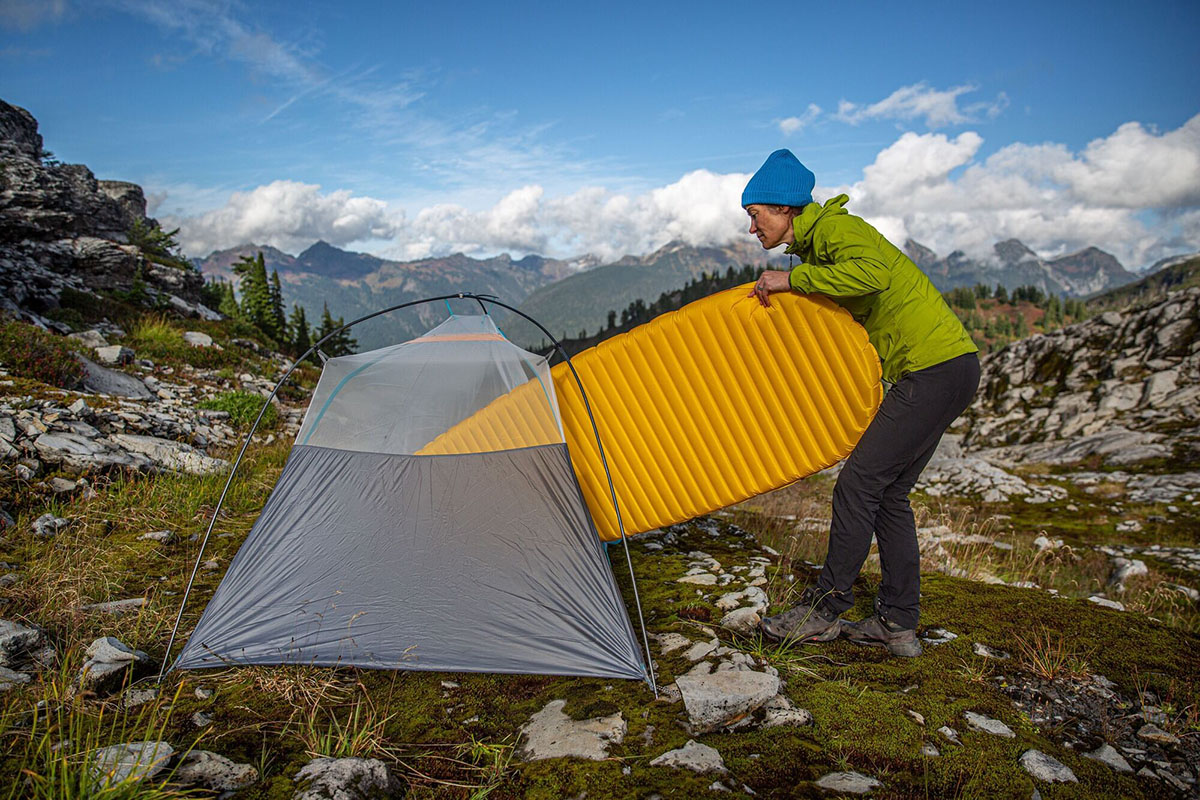
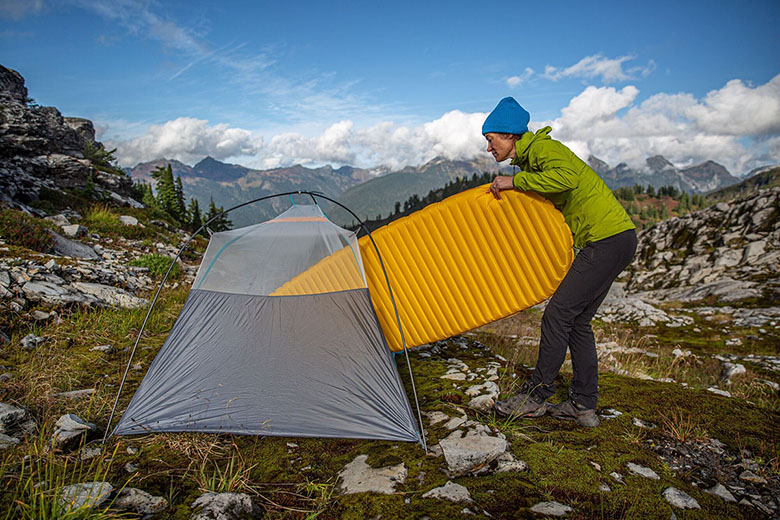
Price: $210
Dimensions: 72 x 20 x 3 in. (Regular size)
Weight: 13.0 oz.
R-value: 4.5
What we like: Light, packable, and competitively warm—a winning combination for many 3-season backpackers.
What we don't: Horizontal baffles have a slightly stiff and slippery feel; not a cost leader.
See the Therm-a-Rest NeoAir XLite NXT
Therm-a-Rest is well known in the backpacking space for their lightweight sleeping pads, and perhaps no design is more ubiquitous than the NeoAir XLite NXT. Built with ultralight backpackers in mind, this pad is popular for its impressive warmth-to-weight ratio and quality construction. One of our testers has been using some iteration of the NeoAir XLite since her first thru-hike in 2015, and Therm-a-Rest has made some major improvements over the years. While earlier models took a lot of work to inflate and were very noisy, the latest design is quick to set up and offers a much quieter night of sleep. Below are our thoughts on the NeoAir XLite NXT. To see how it stacks up to the competition, check out our article on the best backpacking sleeping pads.
We tested the Regular version of the Therm-a-Rest NeoAir XLite NXT for this review, which measures 72 inches long by 20 inches wide. Despite the tapered shape, which is narrower at the bottom than it is at the top, both of our female testers (who are 5’5” and 5’7”) had no trouble fitting on the pad with room to spare. Therm-a-Rest also offers the pad in Regular Short (66 x 20 in.), Regular Wide (72 x 25 in.), and Large (77 x 25 in.) sizes, along with a couple of rectangular Max variations that are heavier but roomier due to their non-tapered builds.
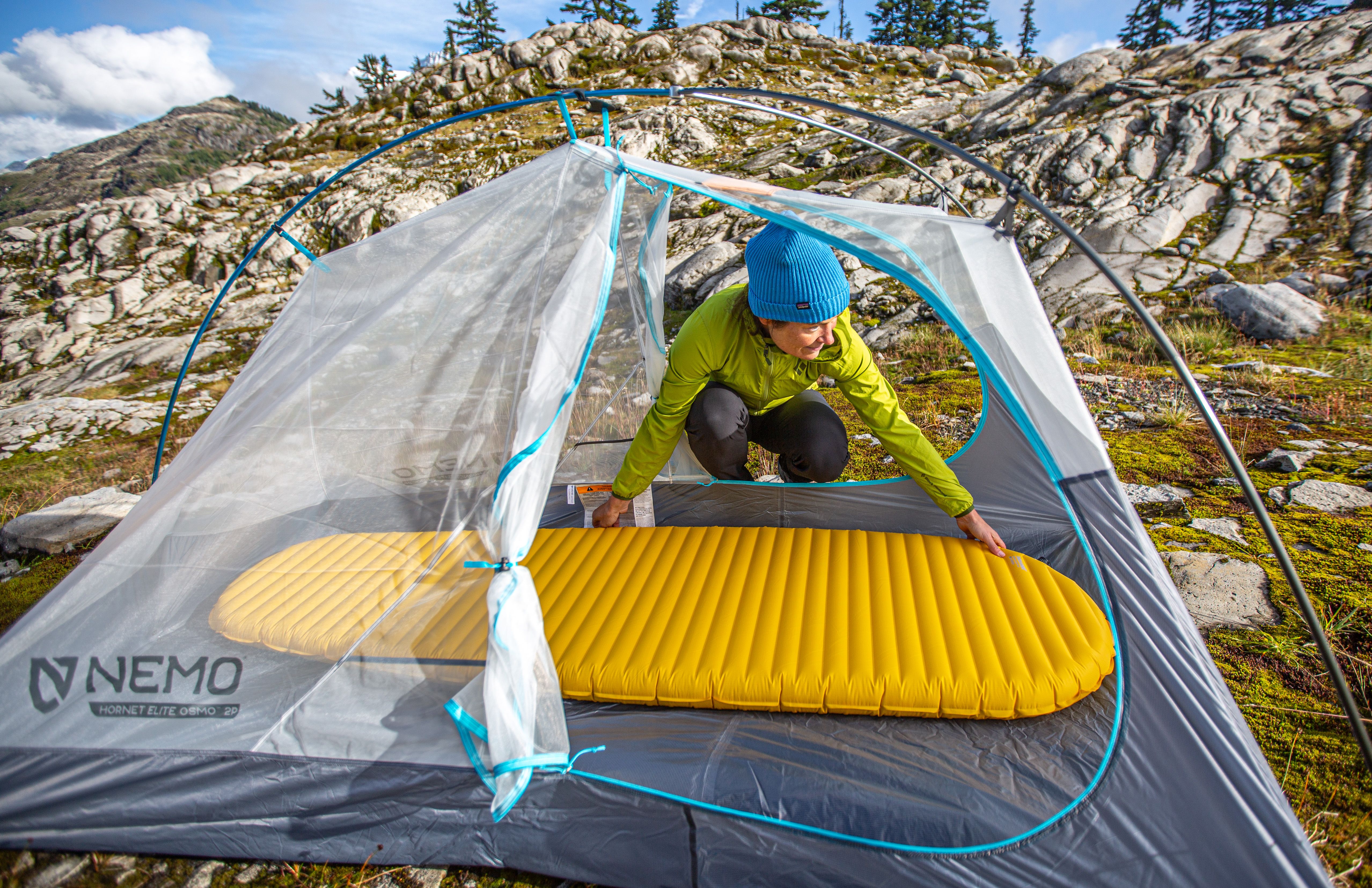
In terms of thickness, the NeoAir XLite NXT features 3-inch-thick horizontal baffles that provide great comfort and protection from the ground for back and side sleepers alike. It’s worth noting that one of our testers often experiences discomfort from her hip bones hitting the ground when rolling over on her side, but that hasn’t been an issue with the NeoAir. Some may find the horizontal baffles to be a bit stiff and slippery, and the lack of side rails can result in a slightly unstable feel (one tester found herself prone to sliding around and rolling off the pad), but it's overall a comfortable experience. We’ve also noticed that drastic temperature shifts throughout the night can result in a noticeable amount of deflation, but the pad has always remained inflated enough to keep us off the ground. Finally, while past versions of the Therm-a-Rest have been noticeably crinkly, the latest model is much quieter, making it easier to get a good night’s sleep.
With an R-value of 4.5, the NeoAir XLite NXT is plenty warm for most 3-season conditions. On a fastpacking mission in Canada’s Yukon Territory, overnight temperatures dipped below freezing, and our tester remained warm and toasty while cozied up in a 20-degree sleeping quilt. We’ve even used the NeoAir XLite in snow during an unexpected spring storm while thru-hiking and managed to stay comfortable, although dedicated winter campers will likely want to step up to a pad with an R-value of 5 or higher (for more on the topic, check out our article on Sleeping Pad R-Value Explained). For these uses, we recommend upgrading to the NeoAir XTherm, which checks in at 15.5 ounces for the regular size and has an R-value of 7.3.
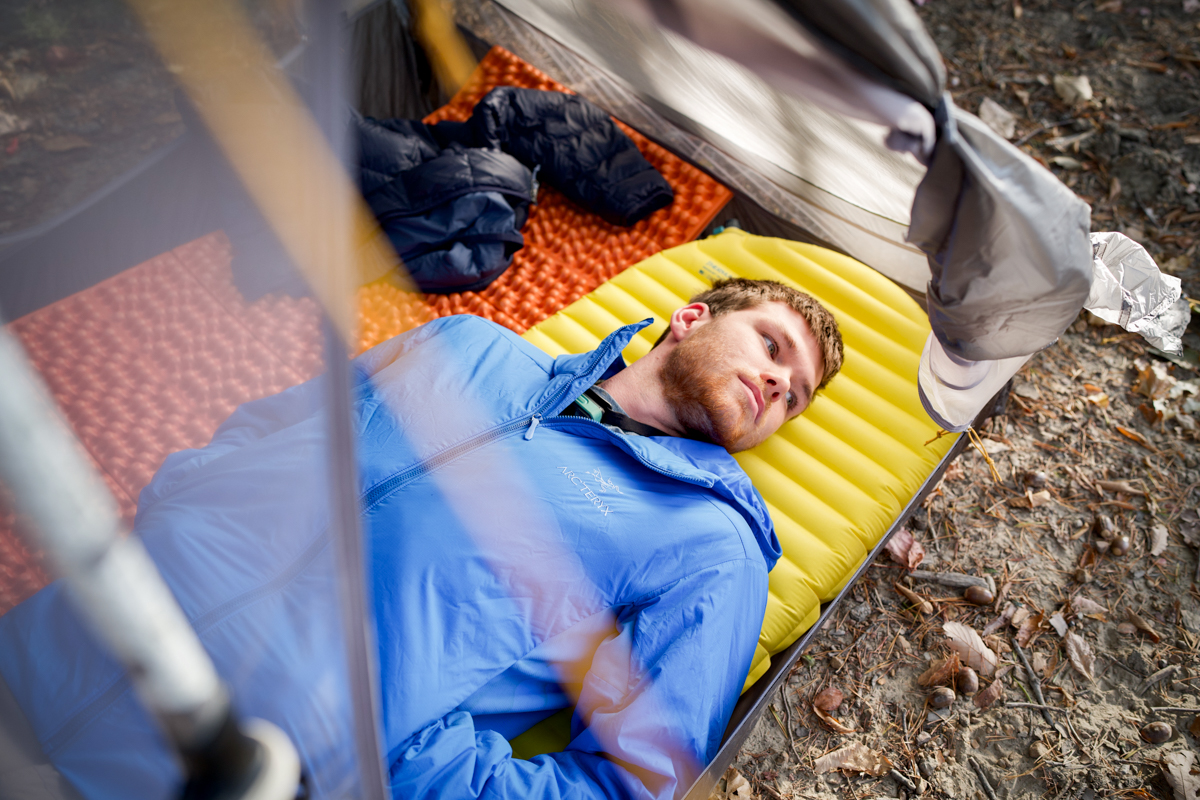
Therm-a-Rest lists the Regular version of the NeoAir XLite NXT at 13 ounces (it weighed just 0.1 oz. more on our scale), and even the 77- by 25-inch Large size is competitively light at 1 pound 1 ounce. Considering its 4.5 R-Value, the NeoAir is impressively feathery for the level of warmth it provides. For comparison, Nemo’s Tensor Elite checks in at a scant 8.5 ounces for the Regular Mummy version but has a much lower R-value of 2.4 and uses noticeably thinner materials. A closer comparison is their Tensor All-Season, which is slightly heavier (14.1 oz.) but offers a nice bump in warmth (R-value: 5.4) for those who camp into the winter months. Most competing pads weigh upwards of a pound, putting the NeoAir in pretty elite company. As a result, it's a great choice for fast-and-light missions, bikepacking objectives, and other adventures that demand keeping weight and bulk to a minimum.
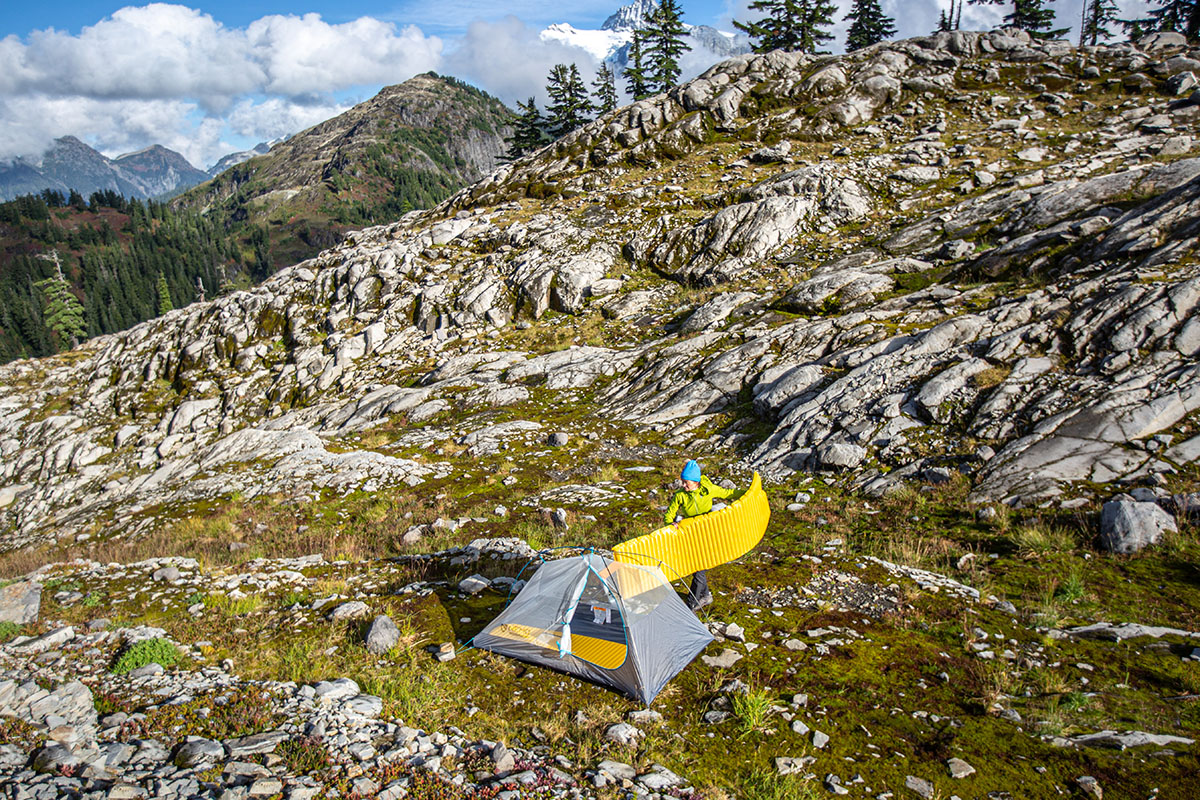
Speaking of bulk, the NeoAir XLite NXT is highly packable, compressing down to about the size of a 32-ounce Nalgene bottle in its stuff sack. For reference, Therm-a-Rest lists the pad’s packed size as 9 by 4.1 inches, which again puts it in between designs like the more streamlined Tensor Elite (5.5 x 3 in.) and warmer Tensor All-Season (10 x 4 in.). In testing, we found the NeoAir fairly easy to cram into its stuff sack, which isn’t always the case with lightweight sleeping pads, although we often prefer to just roll the pad tightly before tucking it into a corner of our pack.
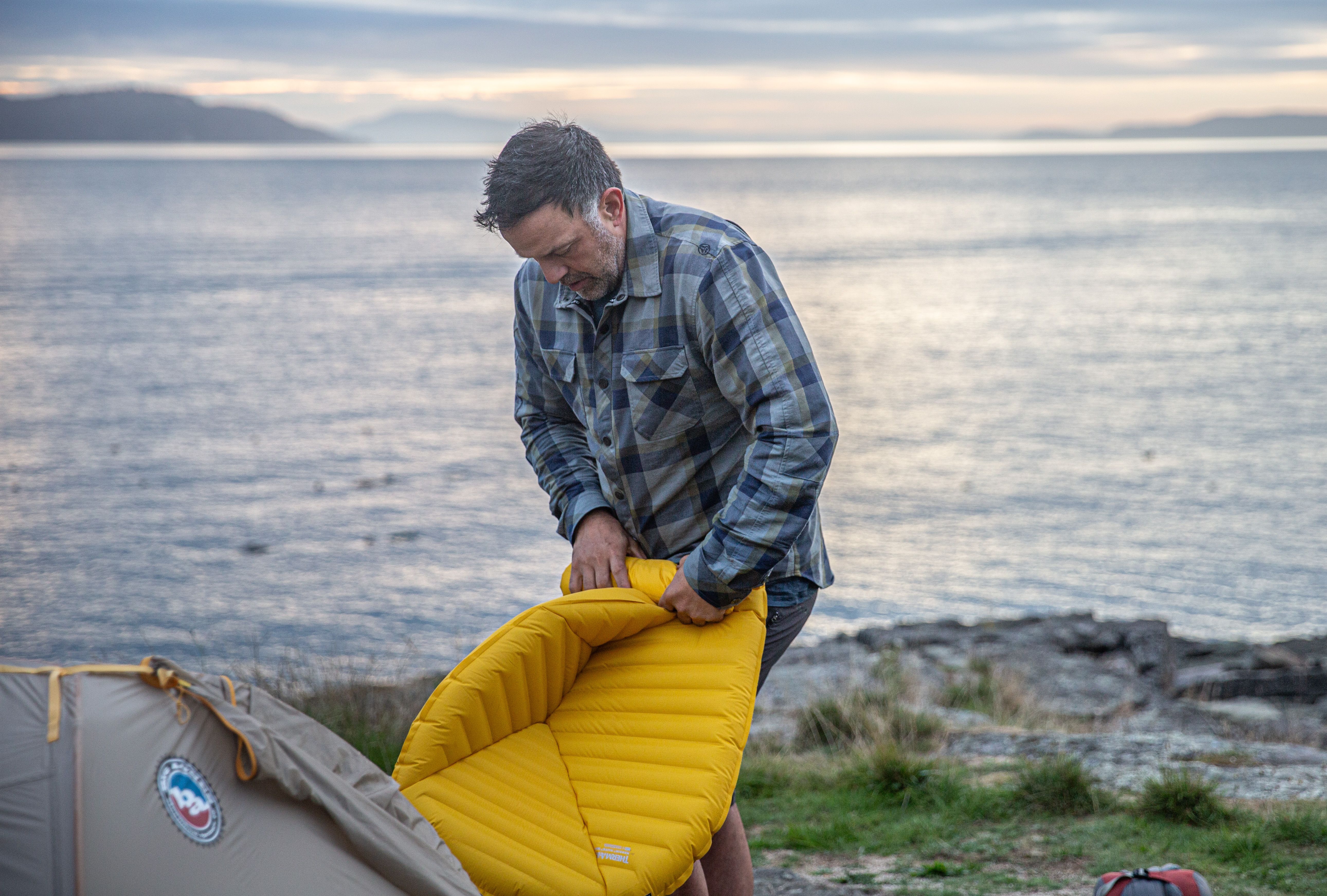
Prior versions of the NeoAir were notorious for taking a lot of time to fill up, but the latest WingLock valve system makes inflation and deflation a whole lot quicker and easier. There are two primary ways to inflate the pad: using the pump sack or breathing directly into the valve (Therm-a-Rest also sells an electric NeoAir Micro Pump, but it's far from necessary, in our opinion). The pump sack couples easily to the valve cap and works like a charm. With the valve twisted open, simply shut the roll-top closure on the pump sack and continue rolling to push air into the pad. In testing, it took us an average of three full fills of the pump sack to inflate the pad. If you prefer to use your breath, we found it took around 10 breaths (note: All the materials inside are coated, so you don’t have to worry about condensation creating mold). It’s easy to release air incrementally to dial in firmness by twisting the “wings” on the valve counterclockwise. For full deflation, simply twist the wings all the way open, then twist the valve cap counterclockwise. Rolling the pad from the bottom to the top will make the process quicker.
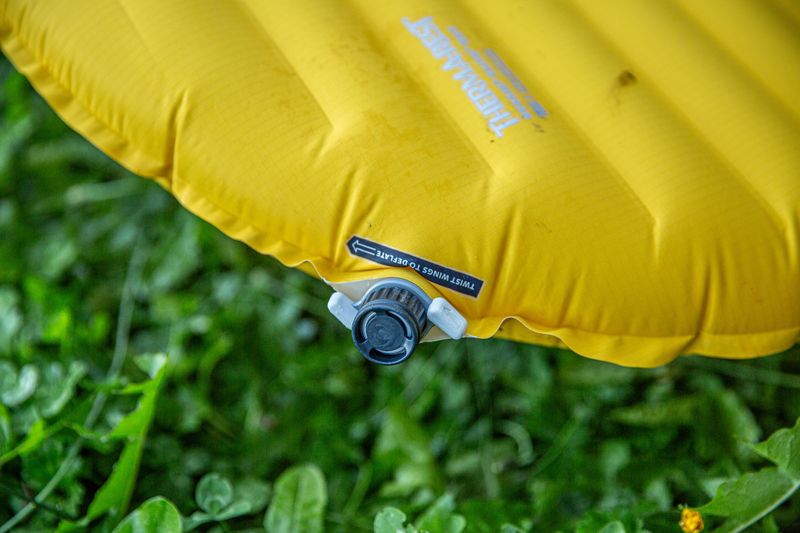
The NeoAir XLite NXT doesn’t have the most stellar reputation for durability, but we’ve had largely positive experiences with the latest model. For reference, the 30-denier (D) ripstop nylon exterior is noticeably more confidence-inspiring than what you get with Nemo’s lighter Tensor Elite (10D), and the only puncture we’ve experienced was the result of user error (sitting on a pair of tweezers). We also appreciate that Therm-a-Rest includes a patch kit for quick repairs in the field. And while prior models have been susceptible to slow leaks, the latest NeoAir appears to be better constructed at common seepage points, including around the valve. If you frequently find yourself cowboy camping, it may be worth stepping up to a more robust option like the Nemo Tensor All-Season, which has a 40D bottom, but the NeoAir strikes us as perfectly serviceable for most backpackers.
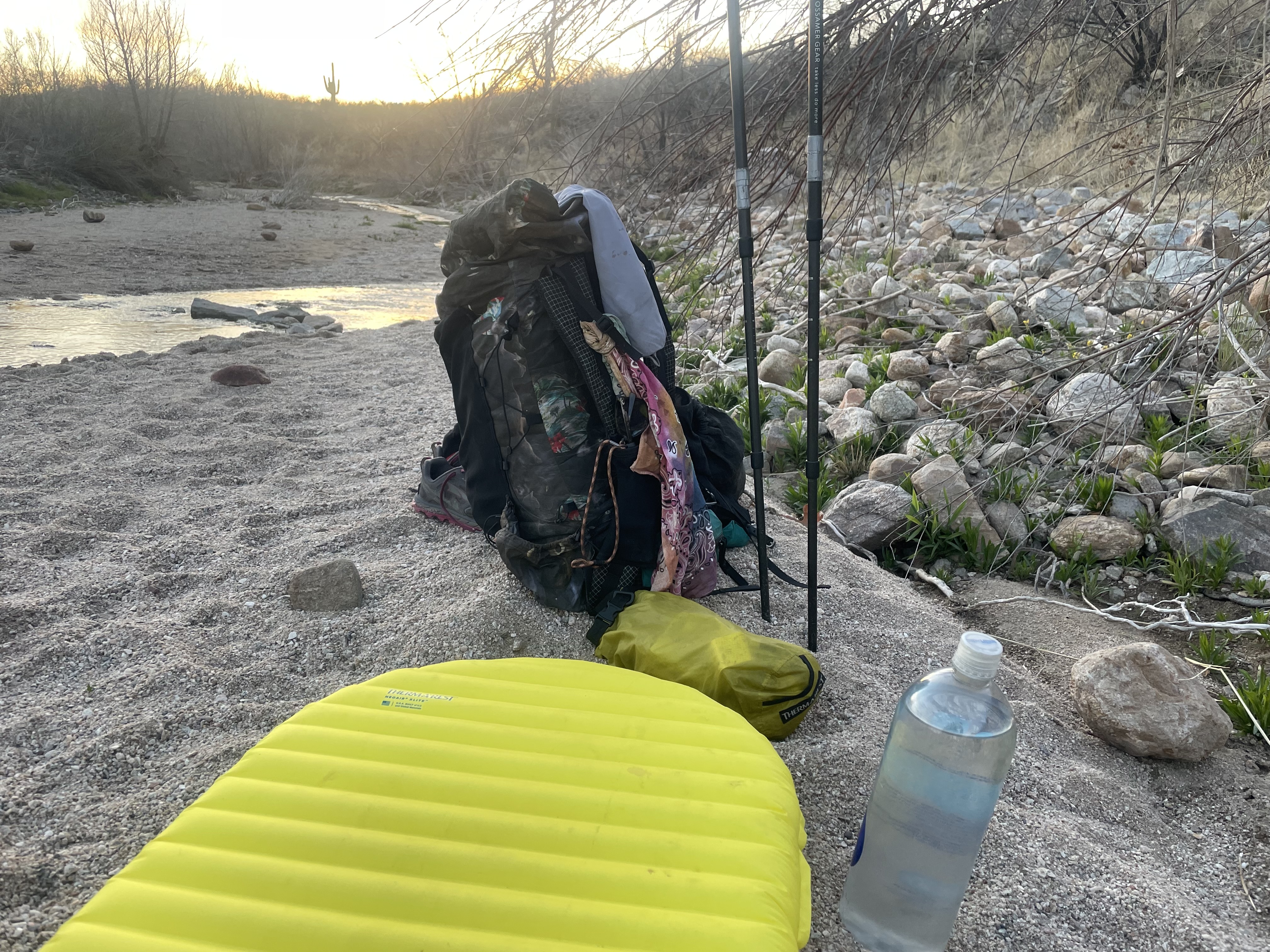
Ranging from $200 to $240 depending on size, the NeoAir XLite NXT doesn’t come cheap but strikes us as reasonably priced for what you get. For reference, Nemo’s Tensor All-Season, which offers a modest bump in warmth, comes in at $200 for the Regular Mummy version (compared to $210 for the Regular size of the NeoAir), and most comparable pads from Sea to Summit and Big Agnes—two of Therm-a-Rest’s primary competitors—aren’t far off. First-time backpackers and those on a budget may want to consider opting for a cheaper design, but be ready to make sacrifices in weight (cheap pads are often heavy), build quality, and comfort. For a full breakdown of options from budget to premium, check out our round-up of the best backpacking sleeping pads.
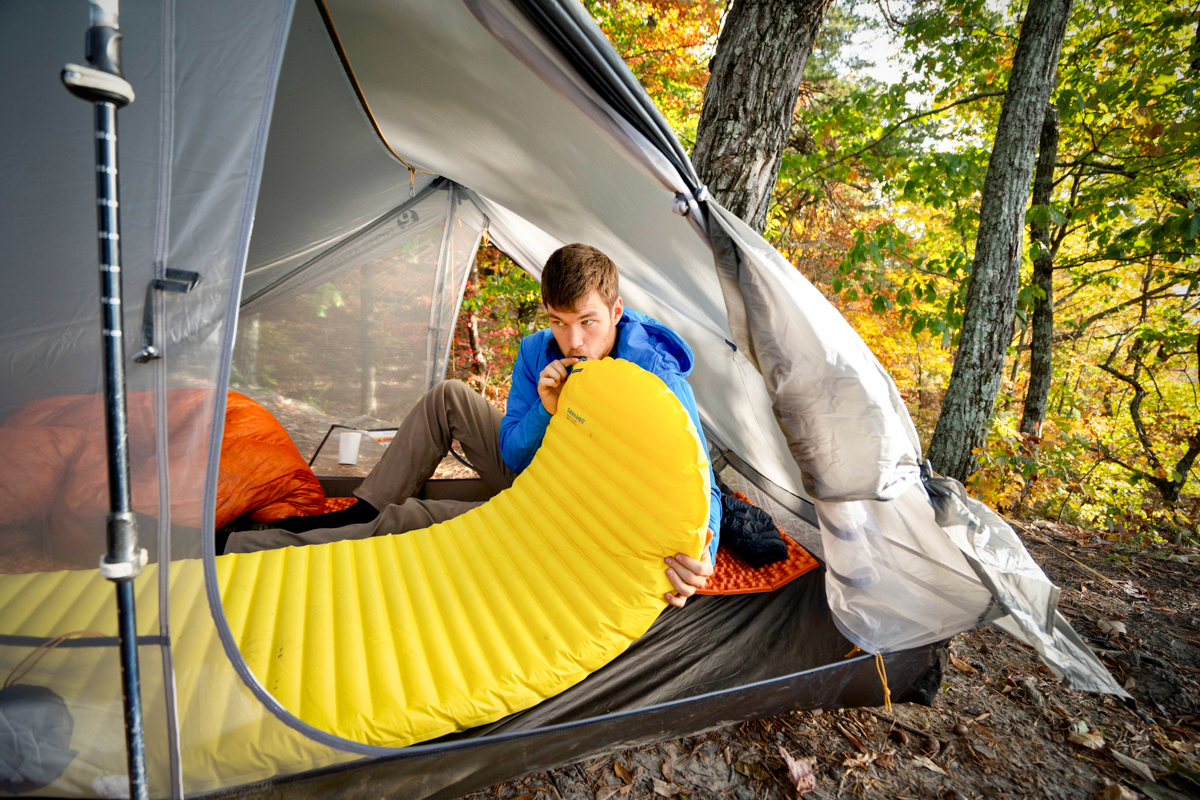
As we touched on above, the NeoAir XLite NXT comes in four sizes: Regular Short, Regular, Regular Wide, and Large. The Regular Short and Regular sizes are 20 inches wide, while the latter two are 25 inches. As expected, weight goes up as pad size increases, with the largest option checking in 5.5 ounces heavier than the smallest. Therm-a-Rest also offers the NeoAir XLite NXT Max, which comes in two sizes: Regular Wide (72 x 25 in.) and Large (77 x 25 in.), both of which feature a rectangular (rather than tapered) shape. The rectangular models weigh more than the mummy designs, but comfort seekers who aren’t counting ounces may enjoy the added room.
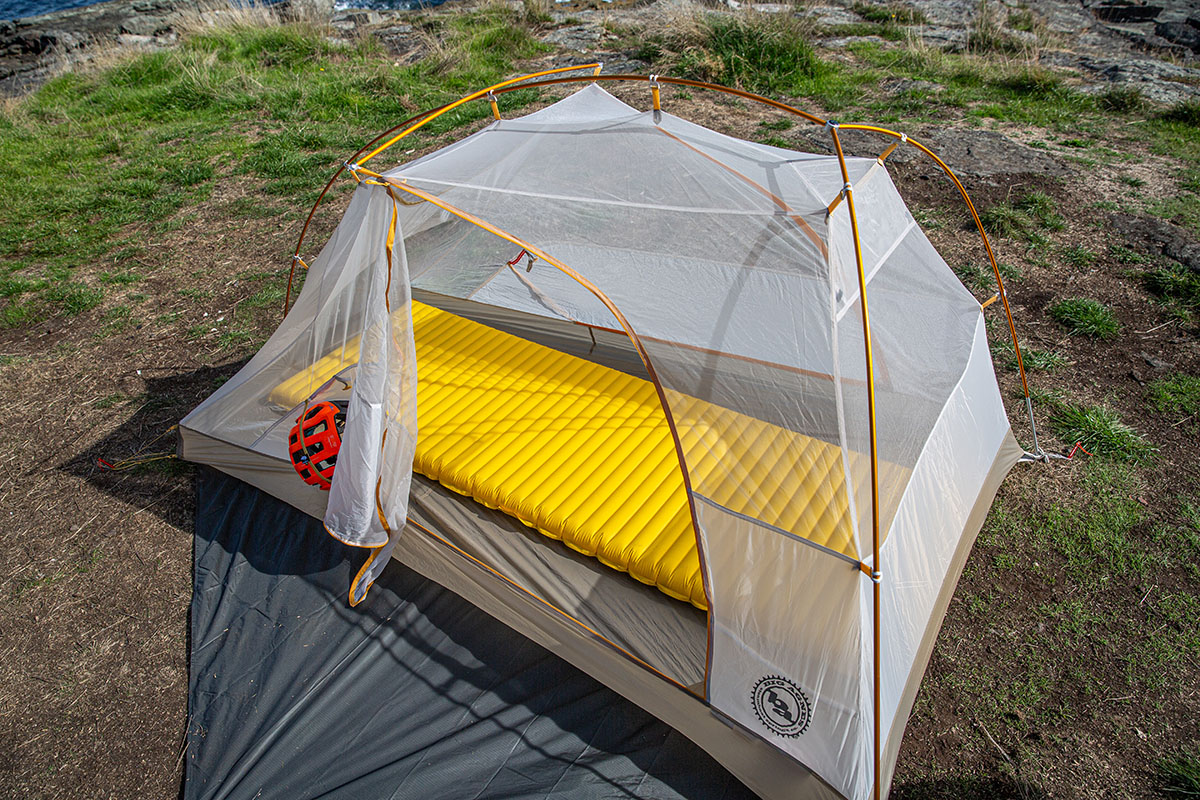
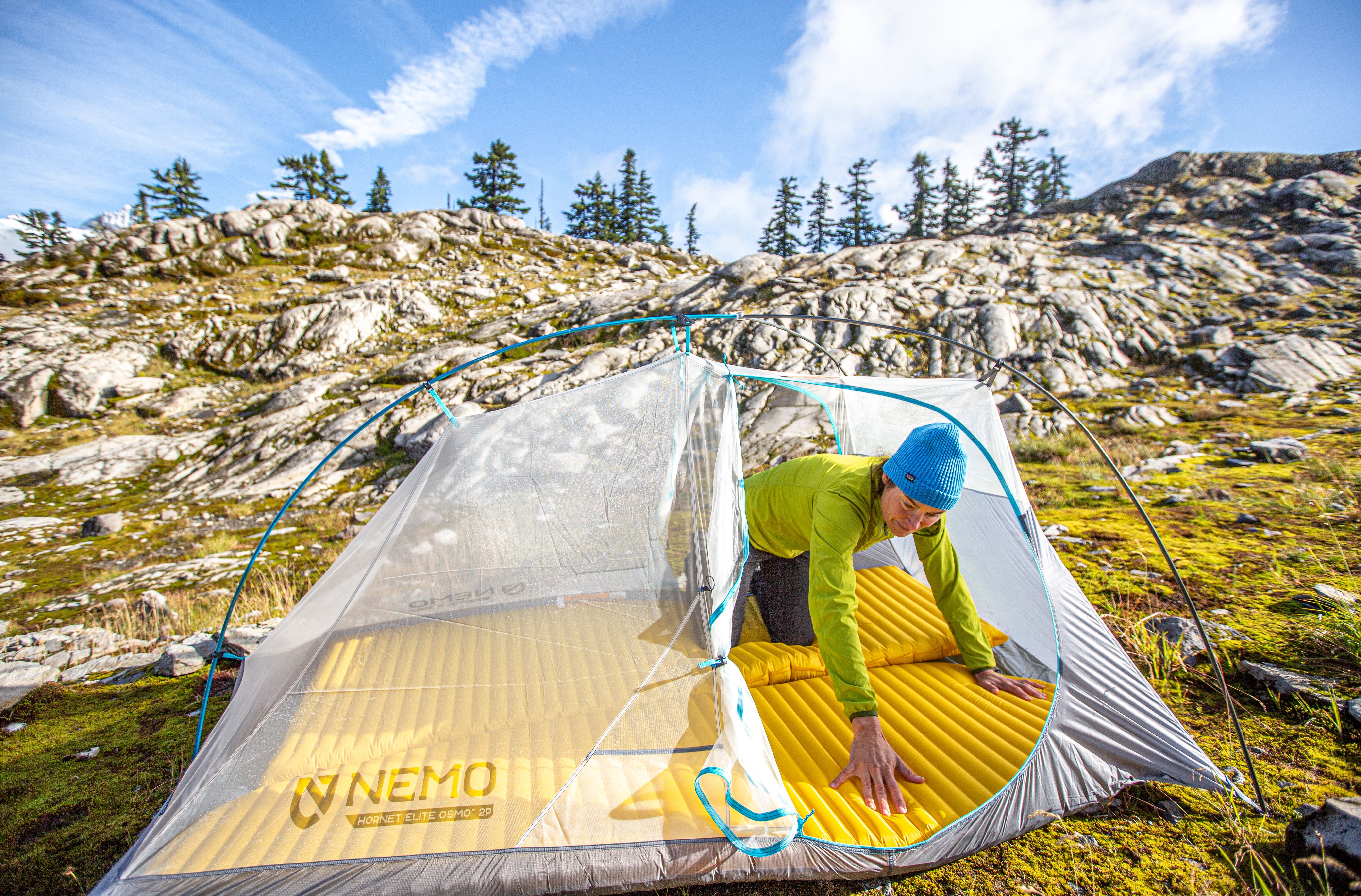
| Sleeping Pad | Price | Dimensions | Weight | R-value | Packed Size |
|---|---|---|---|---|---|
| Therm-a-Rest NeoAir XLite NXT | $210 | 72 x 20 x 3 in. | 13.0 oz. | 4.5 | 9 x 4.1 in. |
| Big Agnes Zoom UL Insulated | $180 | 72 x 20 x 3.25 in. | 14.0 oz. | 4.3 | 8 x 4 in. |
| Nemo Tensor All-Season Ultralight | $200 | 72 x 20 x 3.5 in. | 14.1 oz. | 5.4 | 10 x 4 in. |
| Sea to Summit Ether Light XR ASC | $199 | 72 x 21.2 x 3.9 in. | 1 lb. 0.6 oz. | 4.1 | 8.1 x 4.3 in. |
| Therm-a-Rest NeoAir XTherm NXT | $240 | 72 x 20 x 3 in. | 15.5 oz. | 7.3 | 9 x 4.5 in. |
*Editor's note: For the sake of comparison, the prices and specs listed above are for the standard/regular version of each sleeping pad.
The Therm-a-Rest NeoAir XLite NXT has been our top-rated backpacking sleeping pad for several seasons, but it’s not the only quality option on the market. For $30 less, we also like Big Agnes' Zoom UL Insulated, which we found to be more stable than the Therm-a-Rest due to its taller side rails and body-cradling box baffles. You also get a roomier rectangular build, a slightly thicker construction (3.25 in. with an additional 0.25 in. of thickness along the sides), and a TPU laminate for added abrasion resistance. That said, we came away with some gripes while testing the Big Agnes, including difficulty wrangling the pad back into its stuff sack, a more rudimentary valve system, and less warmth than expected considering the pad’s 4.3 R-value. Given these downsides, we think the NeoAir XLite NXT is worth the added investment for committed backpackers, but those who only get out in the warmer months may not mind the drop in warmth with the Big Agnes.
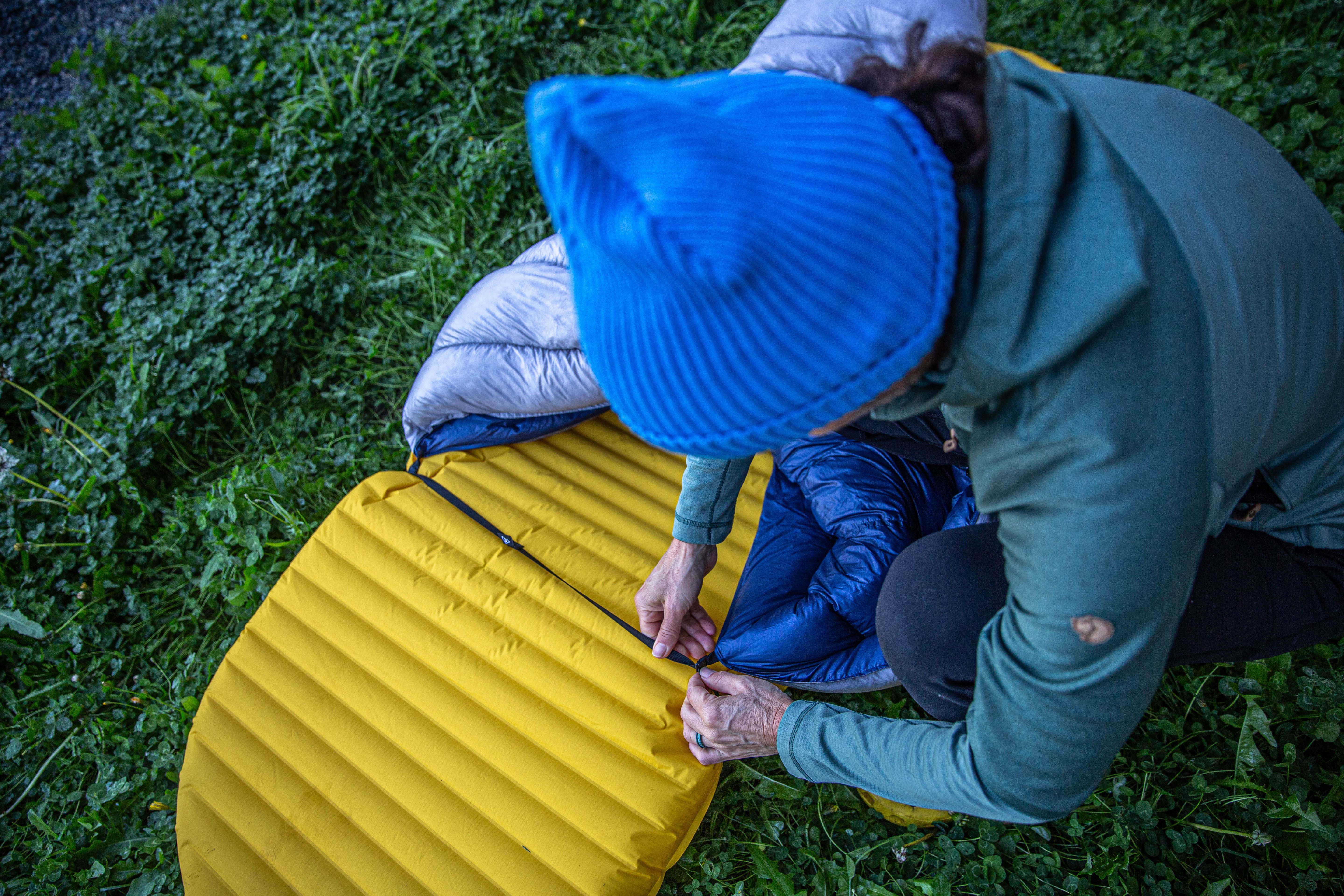
Next up is Nemo’s Tensor All-Season Ultralight Insulated pad, which offers a step up in warmth compared to the NeoAir XLite with an R-value of 5.4. This does result in a small weight penalty, with the Regular Mummy size checking in at 14.1 ounces, but it's a pretty negligible difference, and the Nemo is the better option for those who camp into the winter months. You also get an additional 0.5 inches of cushioning, which is appealing for side sleepers in particular, along with a slightly more robust (40D) fabric on the bottom (the top is 20D). Not to mention, we’re big fans of Nemo’s intuitive Vortex pump sack: Simply snap it onto the flat, micro-adjustable valve, blow lightly into the opening, and roll the collar down to force air into the mat. A final advantage is that the Nemo is a little cheaper, although both are decidedly premium pads. In the end, a final decision will likely come down to how you prioritize warmth, weight, and cushioning.
Another well-rounded option to consider is Sea to Summit’s Ether Light XR Insulated ASC, which is a recent addition to their longstanding Ether collection. Built with the brand’s distinctive Air Sprung Cells and a generous 3.9 inches of cushioning, the Ether has a very supportive and plush feel—great for side sleepers and those prone to tossing and turning throughout the night. Other highlights include a lower-profile—but similarly efficient—valve system, a 3-season-ready R-value of 4.1, and a slightly cheaper price tag. Weight jumps to 1 pound 0.6 ounces, but packed size is very similar between the two, and it’s hard to beat the level of comfort. Ultralight backpackers willing to eschew some creature comforts will likely prefer the NeoAir XLite, but the Ether Light XR gets our vote for finicky sleepers.
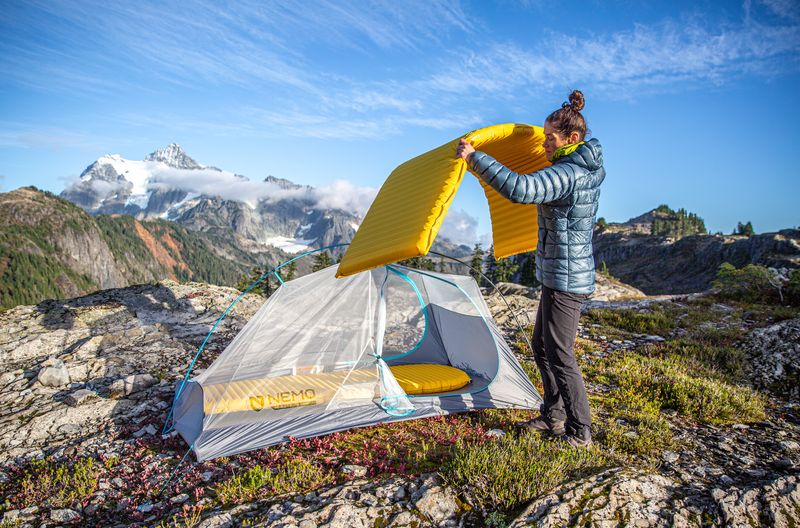
Last but not least is a winter-ready alternative to the NeoAir XLite: Therm-a-Rest’s own NeoAir XTherm NXT. The two designs are largely similar, including horizontal baffles, identical dimensions, Therm-a-Rest’s well-executed WingLock valve, and 3 inches of cushioning. The biggest difference is warmth: The NeoAir XTherm uses additional layers of the brand’s ThermaCapture material, which acts like an emergency blanket to reflect your body heat back to you, resulting in an R-value of 7.3. Weight and price go up by 2.5 ounces and $30, respectively, but those who get out consistently in the winter months will almost certainly find the added investment worth it.
If you’re thinking about buying gear that we’ve reviewed on Switchback Travel, you can help support us in the process. Just click on any of the seller links above, and if you make a purchase, we receive a small percentage of the transaction. The cost of the product is the same to you but this helps us continue to test and write about outdoor gear. Thanks and we appreciate your support!
Depending on the seller, most products ship free in the United States on orders of $50 or more. International shipping availability and rates vary by seller. The pricing information on this page is updated hourly but we are not responsible for inaccuracies.